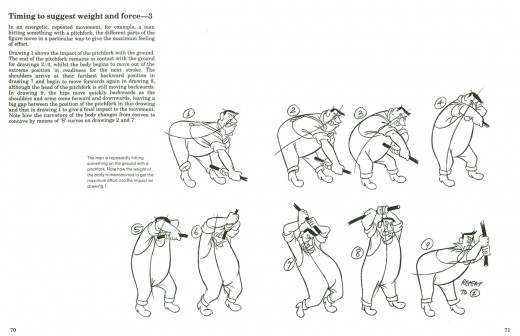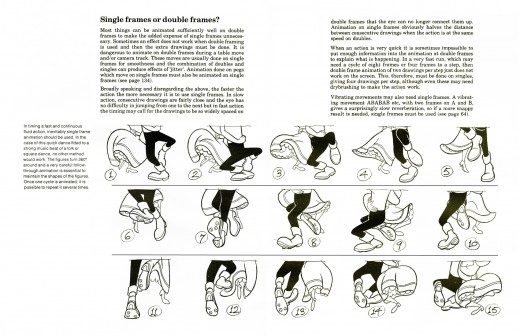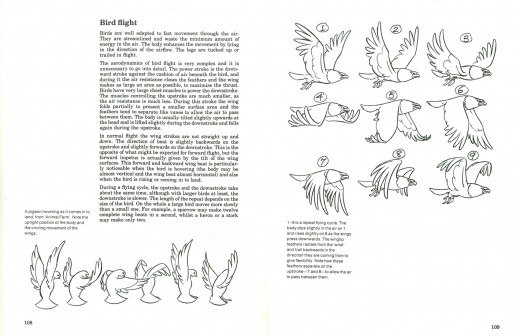Animation &Books 31 Mar 2010 09:37 am
Whitaker cycles
- On Saturday last, I spoke briefly about Harald Whitaker“s book Timing for Animation. (Recently updated with some additional information from Tom Sito. Unfortunately, I don’t have the updated version, so these pages came from the original printing.)
After writing that, I decided to try making QT movies of a couple of the cycles in the book. It’s one thing to see how a master animates actions in place via the drawings; it’s another to see how it actually moves.
Hence, I’ve taken three of the pages from the book, broken down the drawings and dragged them through AfterEffects putting all of the motions on twos.

This beautiful action perfectly and simply breaks down a
difficult motion. It’s quite alive and masterful, if you ask me.
The following motion was exposed on twos.
Click left side of the black bar to play.Right side to watch single frame.

The second motion is a dance. Whitaker uses it as an example of why things are exposed on ones or twos. I went against his lesson
and did the QT on twos. I wanted you to see the movement more
clearly (there’s a small jump from the last drawing back to the first.
The following motion was exposed on twos.
Click left side of the black bar to play.Right side to watch single frame.

This third lesson is about a basic bird flight pattern.
He’s animated a larger bird. If it were smaller the body
of the bird would also be moving up and down.
The following motion was exposed on twos.
Click left side of the black bar to play.Right side to watch single frame.
This is an excellent book. If you don’t own it, it’s worth every cent of it’s price. Buy it.

on 31 Mar 2010 at 10:21 am 1.richard o'connor said …
Definitely the best of the bunch of “how to” books.
One I return to regularly and recommend constantly.
on 31 Mar 2010 at 10:37 am 2.Mark Mayerson said …
In this day and age, it shouldn’t fall to you to turn these into animations. The publisher should have included a DVD with the revised book that included them, as the publisher of Eric Goldberg’s book did.
The first animation is a great example of the successive breaking of joints.
on 31 Mar 2010 at 11:37 am 3.james madison said …
Thanks for posting.
on 31 Mar 2010 at 1:07 pm 4.Eric Noble said …
Wonderful animations. I will definitely have to purchase this, as it seems to have a lot of what is required for good animation, at least in the technical sense. There is still much to learn in order to give a good animated performance. Thank you very much for sharing this with us Mr. Sporn.
BTW, I agree with Mr. Mayerson. There should be a bonus DVD with this book. It would probably help make things easier.
on 31 Mar 2010 at 2:30 pm 5.David Nethery said …
“After writing that, I decided to try making QT movies of a couple of the cycles in the book. It’s one thing to see how a master animates actions in place via the drawings; it’s another to see how it actually moves.”
—–
Absolutely.
That’s what Focal Press should have done when they put out an updated edition of the book.
I’m glad you’re doing it and posting the QT’s here, but Focal Press dropped the ball on that (as long as they were “updating” the book anyway) . That sort of technology didn’t exist when the book was originally published, but now there’s no reason not to include a CD of the animation from the book (as the Eric Goldberg book does). Or if the CD was deemed to expensive , post the movies as downloadable media from their website.
Thanks for posting these !
on 01 Apr 2010 at 9:23 am 6.Neil Hunter said …
Awwesome as always. Thanks.
on 05 Aug 2014 at 5:47 am 7.Colby Zakes said …
well written article.. well done